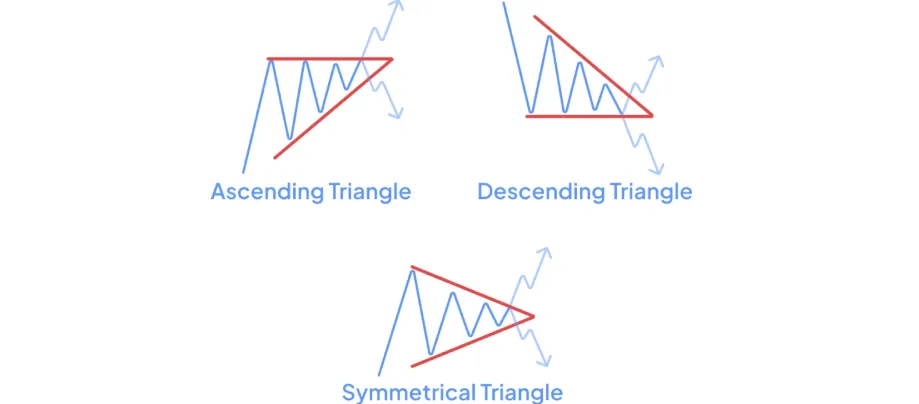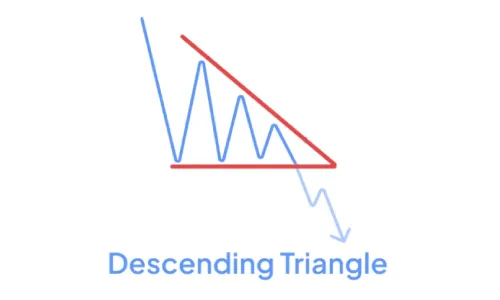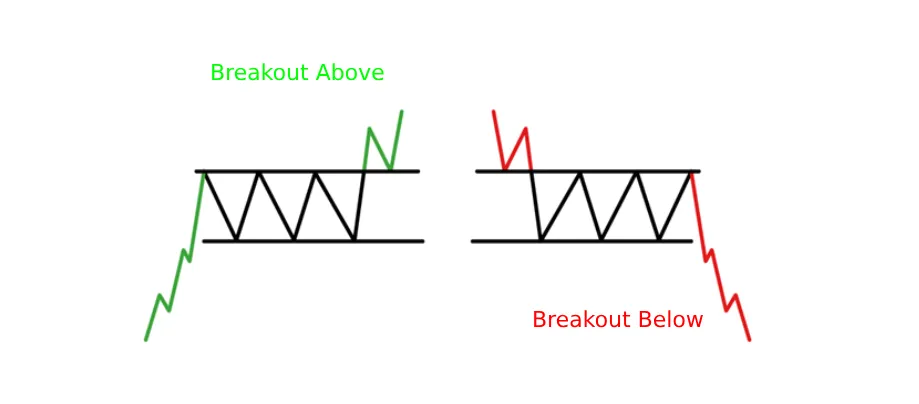What Are Triangle Patterns? The 3 Key Variants Traders Must Know

📊 Triangle patterns are among the most powerful chart formations in technical analysis. These consolidation patterns help traders predict breakouts, spot trend continuations, and time their entries with precision. Whether you trade stocks, forex, or crypto, mastering triangles can give you a competitive edge.
In this comprehensive guide, you’ll learn:
✅ What triangle patterns are and how they form
✅ The 3 main types (Symmetrical, Ascending, Descending)
✅ How to trade each variant (with real chart examples)
✅ Pro tips to avoid false breakouts
🔺 What Are Triangle Patterns?
A triangle pattern forms when price action creates converging trendlines, showing a battle between buyers and sellers. These patterns typically indicate:
✔ Consolidation before a breakout.
✔ Trend continuation (most common).
✔ Potential reversals (less frequent).
Key Features:
- Two trendlines (support + resistance) converge.
- Volume decreases as the pattern develops.
- Breakout direction often follows the prior trend.
📐 The 3 Types of Triangle Patterns
1. Symmetrical Triangle ⚖️

Shape:
- Lower trendline (rising support).
- Upper trendline (falling resistance).
- Price squeezes between them.
What It Means:
- Indecision—buyers and sellers are equally strong.
- Breakout direction is neutral (watch for confirmation).
How to Trade It:
- Wait for breakout (above resistance = bullish, below support = bearish).
- Volume should spike on the breakout.
- Price target = Height of the triangle’s base projected from the breakout point.
📌 Example: Stock consolidating before earnings, then breaks upward.
2. Ascending Triangle 📈

Shape:
- Flat upper trendline (resistance).
- Rising lower trendline (support).
What It Means:
- Buyers are stronger than sellers (bullish signal).
- Common in uptrends (continuation pattern).
How to Trade It:
- Expect breakout upward (confirmed by high volume).
- Buy above resistance, stop-loss below the last higher low.
📌 Example: Crypto repeatedly testing a resistance level with higher lows before a breakout.
3. Descending Triangle 📉

Shape:
- Flat lower trendline (support).
- Falling upper trendline (resistance).
What It Means:
- Sellers overpower buyers (bearish signal).
- Common in downtrends (continuation pattern).
How to Trade It:
- Expect breakdown downward.
- Sell/short below support, stop-loss above the last lower high.
📌 Example: Forex pair repeatedly bouncing off support but making lower highs before collapsing.
🎯 How to Trade Triangle Patterns (Step-by-Step)
Step 1: Identify the Triangle Type
- Is it symmetrical, ascending, or descending?
- Check the prior trend (continuation likely).
Step 2: Wait for Breakout Confirmation
- Price must close outside the trendline.
- Volume should increase (especially for bullish breakouts).
Step 3: Enter with Proper Risk Management
- Buy/Sell in breakout direction.
- Stop-loss: Inside the triangle (opposite side of breakout).
- Take-profit: Measure the triangle’s height and project it from the breakout point.
📌 Pro Tip: False breakouts are common—wait for a retest of the trendline for extra confirmation.
⚠️ Common Triangle Trading Mistakes
❌ Trading Too Early – Wait for a confirmed breakout!
❌ Ignoring Volume – Low-volume breakouts often fail.
❌ Forcing the Pattern – Not every consolidation is a triangle.
🔍 Triangle vs. Other Chart Patterns
| Feature | Symmetrical Triangle | Ascending Triangle | Descending Triangle |
|---|---|---|---|
| Trendlines | Converging | Flat top, rising bottom | Flat bottom, falling top |
| Bias | Neutral | Bullish | Bearish |
| Breakout | Either direction | Usually up | Usually down |
📌 Key Takeaways
✔ Triangles signal consolidation before breakouts.
✔ 3 types: Symmetrical (neutral), Ascending (bullish), Descending (bearish).
✔ Trade breakouts with volume confirmation + measured targets.
✔ Avoid false signals by waiting for retests.
Recommended Reading
Guide to Volume Price Analysis by Anna Coulling
Technical Analysis of the Financial Markets by John J. Murphy






